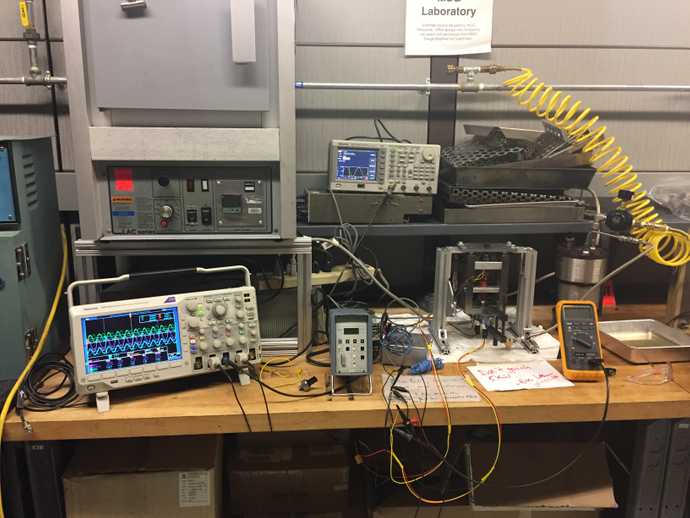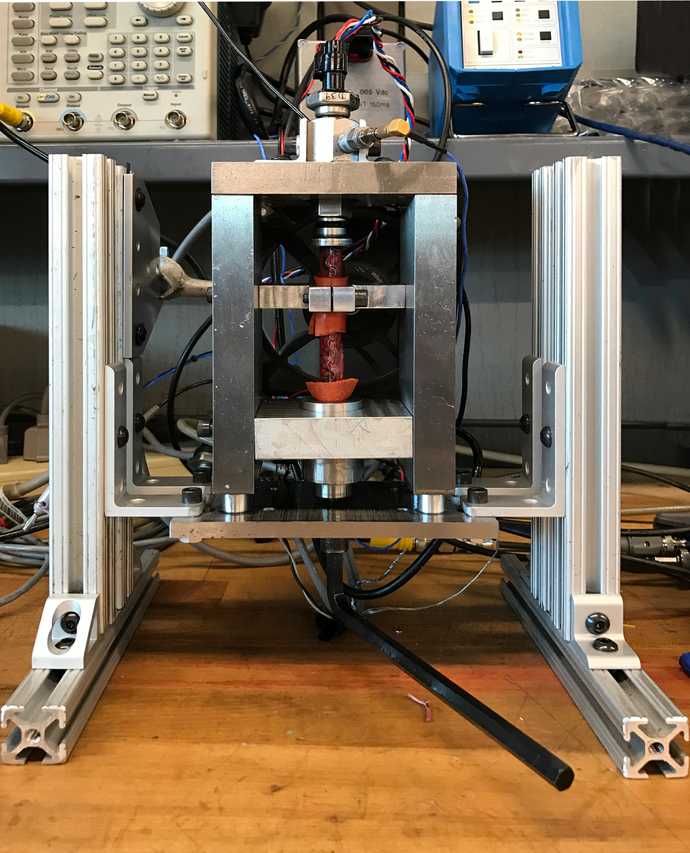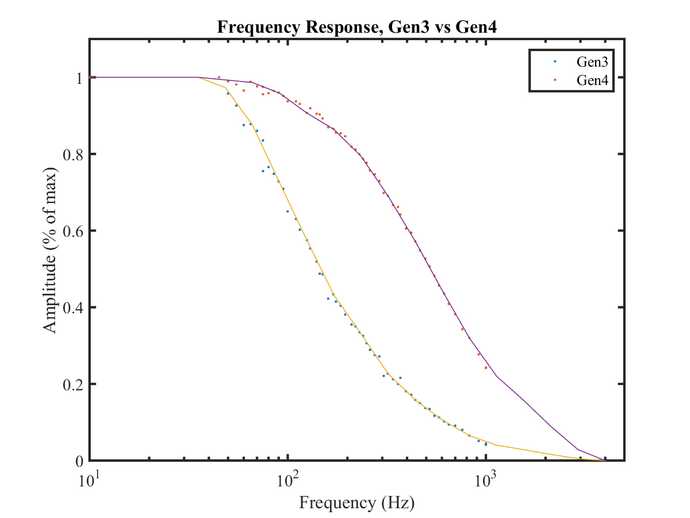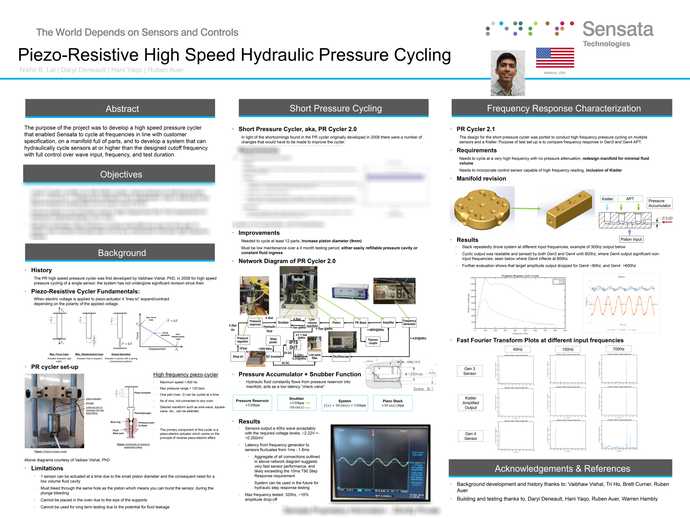Piezo-resistive Amplified High Speed Pressure Cycler
Summary
I developed a system of pressure cycling that would enable me to high speed pressure cycle far in excess of Sensata’s typical pressure cycling frequencies. Most pressure cycling at Sensata took place <10 Hz, but the cycler I built was capable of cycling at up to 5kHz. A customer approached us with a test that would require 400M cycles. Normally this test would take years to run, and so to save millions of dollars in non-recurring engineering cost, I developed this cycler.
As an expansion, I was able to run mechanical resonant frequency analysis using the piezo actuator, which enabled Sensata, for the first time, to mechanically characterize the frequency response of a sensor and generate useful data to empirically derive their true mechanical transfer function.
Photos
 Fig. 1: Full system in use, visuals of the oscilloscopes, amplifier, electromechanical-fluidic system, and the key innovation of a fluid accumulator that would bleed small amounts of fluid into the system via a repurposed snubber to replenish fluid leaking out past the dynamic piston seal. The snubber served as a pressure barrier, so, despite cycling rapidly on the system side, it would create an artificial pressure wall due to the significant L/d ratio of the micro-orifice. See Pouiseuille’s Law for more details.
Fig. 1: Full system in use, visuals of the oscilloscopes, amplifier, electromechanical-fluidic system, and the key innovation of a fluid accumulator that would bleed small amounts of fluid into the system via a repurposed snubber to replenish fluid leaking out past the dynamic piston seal. The snubber served as a pressure barrier, so, despite cycling rapidly on the system side, it would create an artificial pressure wall due to the significant L/d ratio of the micro-orifice. See Pouiseuille’s Law for more details.
 Fig. 2: Close-up of the pressure cycler interface, a 120um displacement stack of ceramic piezoactuators was used to mechanically actuate a piston, displacement induced by 10kV amplitude sine wave. The piston would repeatedly compress a small volume of fluid which the pressure sensor under test and the Kistler reference pressure would simultaneously measure.
Fig. 2: Close-up of the pressure cycler interface, a 120um displacement stack of ceramic piezoactuators was used to mechanically actuate a piston, displacement induced by 10kV amplitude sine wave. The piston would repeatedly compress a small volume of fluid which the pressure sensor under test and the Kistler reference pressure would simultaneously measure.
 Fig. 3: Following the poster session, I spent time conducting additional testing to gather enough data to normalize the sensor outputs. Each dot on this plot represents a discrete sampling at a particular frequency. A Fast Fourier Transform is conducted on each subset of data at every frequency tested, and the aggregate of every transform is plotted here using a MATLAB script. The digital filtering (Low Pass Filter emulation) built into the ASIC of the Gen4 sensor dampens response compared to the Gen3 ASIC that does not have this feature.
Fig. 3: Following the poster session, I spent time conducting additional testing to gather enough data to normalize the sensor outputs. Each dot on this plot represents a discrete sampling at a particular frequency. A Fast Fourier Transform is conducted on each subset of data at every frequency tested, and the aggregate of every transform is plotted here using a MATLAB script. The digital filtering (Low Pass Filter emulation) built into the ASIC of the Gen4 sensor dampens response compared to the Gen3 ASIC that does not have this feature.
